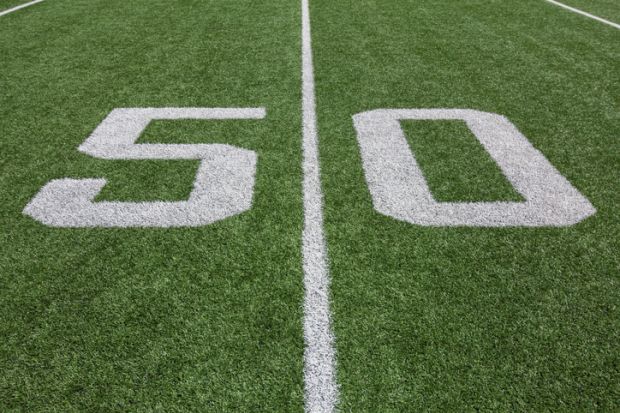A federal judge has granted class action status in a lawsuit that could force US universities to start paying billions of dollars to thousands of student athletes blocked from profiting from their institutions’ sports enterprises.
The judge, Claudia Ann Wilken, based in California, ruled ahead of an expected 2025 trial brought by three students that any damages and remedies in their case could be applied to fellow athletes across the country.
The lawsuit is part of an ongoing series of political and legal attempts in recent years to force US higher education to share with student athletes the estimated $16 billion (£13 billion) in annual revenues that their teams – mostly men’s American football and basketball – have been generating for their institutions.
The case was brought on behalf of students at three institutions – Arizona State University, the University of Illinois at Urbana-Champaign and Texas Christian University. Their immediate complaint concerned rules enforced by the governing body of US college athletics, the NCAA, that prevented and still limit the ability of student athletes to profit from their own celebrity endorsements – commonly known as NIL, or name, image and likeness.
With Judge Wilken agreeing that the case deserved class action status, the direct beneficiaries could expand to an estimated 14,000 of their fellow athletes, with a potential payout estimated at more than $1.4 billion, then tripled under antitrust rules to beyond $4.2 billion.
But even more significantly, said Steve Berman, a lead attorney representing the plaintiffs, arguments in the case could go beyond NIL matters to give student athletes a clearer right to parts of a much larger pool of revenues, including broadcast fees and ticket sales.
“It’s a huge potential change in the NCAA and student athlete relationship,” Mr Berman said.
The NCAA declined to comment on Judge Wilken’s ruling other than to issue a two-sentence written statement in which it expressed opposition to her ruling, saying that the matter of NIL policy “is highly specific” and complaining that the plaintiffs expect that 96 per cent of the damages would go to men.
“The NCAA fully supports all student athletes profiting from their NIL rights, and the association is increasing benefits for student-athletes – including new health and well-being requirements and guaranteed academic supports for all of Division I,” the NCAA said.
Division I refers to the top tier of US college sports. The plaintiffs’ attorneys did not respond to questions about the gender distribution of any potential court verdict, although the overwhelming majority of revenue in US college sports is generated by the men’s football and basketball teams. The revenue also is heavily concentrated at universities that focus on those two sports, with several institutions amassing more than $200 million in annual revenues.
The NCAA long fought against student athletes seeking a share in sports revenues. But as lawsuits proliferated and states enacted their own rules, the NCAA has been pleading with Congress to set nationwide standards. Other pending challenges for the NCAA include both the federal National Labour Relations Board and a federal appeals court considering whether student athletes have the right to be treated as employees, and Dartmouth College men’s basketball players trying to form the nation’s first-ever student athlete union.
Register to continue
Why register?
- Registration is free and only takes a moment
- Once registered, you can read 3 articles a month
- Sign up for our newsletter
Subscribe
Or subscribe for unlimited access to:
- Unlimited access to news, views, insights & reviews
- Digital editions
- Digital access to THE’s university and college rankings analysis
Already registered or a current subscriber? Login










